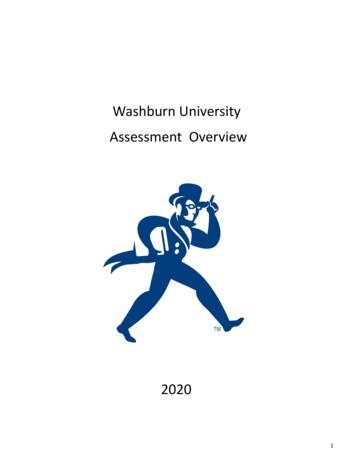Bhbooklet2.indd 100-101 7/11/01, 8:54 AM - NASA
bhbooklet2.indd100-1017/11/01, 8:54 AM
An Information & Activity BookletGrades 9-121998-1999Updated 2001IMAGINE THE UNIVERSE!Probing the Structure & Evolution of the SFCbhbooklet2.indd100-1017/11/01, 8:54 AM
bhbooklet2.indd102-1037/11/01, 8:54 AM
IMAGINE THE UNIVERSE!PresentsWritten byDr. Laura A. WhitlockSonoma State UniversityRohnert Park, CAMs. Kara C. GrangerMaria Carrillo High SchoolSanta Rosa, CAMs. Jane D. MahonHoover High SchoolHoover, ALThis booklet along with the matching poster, is meant to be used in conjunction with theIMAGINE THE UNIVERSE! Web site or 102-1037/11/01, 8:54 AM
TABLE OF CONTENTSTable of Contents . iAssociation with National Mathematics and Science Standards . iiiPreface . 1Welcome to an Amazing Universe . 2Introduction to Black Holes . 3Black Holes Come in All Sizes (Masses) . 4More about Stellar-Mass Black Holes . 4More about Medium-Size Black Holes . 5More about Supermassive Black Holes . 5Role of Black Holes in Development of the Early Universe . 6If We Can t See It, How Do We Know It’s There? . 6Journey into a Black Hole . 7The Electromagnetic Spectrum as a Probe of Black Holes . 9Activities and Problems Related to Black Holes .11Model a Black Hole . 11Aluminum Foil, Balloons, and Black Holes . 12Gravity Is as Gravity Does . 17Testing Einstein 101 . 21Crossing the Event Horizon . 22How Much Do You Know? . 22Inevitable Mathematics . 23Answers . 24About the Poster . 27Glossary . 28Related Resources . 30ibhbooklet2.indd17/11/01, 8:54 AM
iibhbooklet2.indd2-37/11/01, 8:54 AM
National Mathematics and Science Content Standardsfor the Activities in this BookletAll Standards are for Grades 9-12Gravity Is asGravity Does TestingEinstein 101 Crossing theEvent Horizon How MuchDo You Know? InevitableMathematicsData Analysis andProbability Measurement AlgebraAluminum Foil,Balloons, andBlack HolesNumber and Operations Math StandardsProcess Standards History and Natureof ScienceModel aBlack HolePhysical ScienceClassroomACTIVITYScience as InquiryStructure and Evolutionof the UniverseScience Standards iii
ivbhbooklet2.indd4-17/11/01, 8:54 AM
PrefaceWELCOME to the second in a series of posters and activity booklets produced in conjunctionwith the Imagine the Universe! Web site. The poster/booklet sets are intended to provideadditional curriculum support materials for some of the subjects presented in the Web site. Theinformation provided for the educator in the booklet is meant to give the necessary backgroundinformation so that the topic can be taught confidently to students. The activities can be used toengage and excite students about the topic of black holes in a number of disciplines and ways. Allactivities can be photocopied and distributed for educational, non-commercial purposes!For additional materials and information, visit the Imagine the Universe! Web site at:http://imagine.gsfc.nasa.gov/. We look forward to hearing your opinions about this poster/bookletset! Our email address is 01, 8:54 AM
The Anatomy of Black HolesI. Welcome to an Amazing UniverseBlack holes exert a strong pull on both the scientific and the popular imaginations. They oftenprove beyond the limits of our abilities to comprehend. Indeed, they sound like a lot of nonsensefrom a bad movie. Nevertheless, black holes have gone from being a “purely theoretical fancy”to being the objects of cutting-edge scientific study. We have strong evidence that black holes notonly exist, but may exist in the centers of every galaxy. We have a good theory, general relativity,that describes what happens around a black hole. It is a theory which completely overturnedour commonplace notion of space and time, and nowhere do we see its amazing conclusions sostrikingly as around black holes. Through a study of black holes, we will begin to piece togetherour picture of the fundamental physics of spacetime. And no doubt, the Universe will hold manysurprises for us in our quest!Let us begin our journey with a brief discussion of the differencebetween the world as we experience it in our everyday lives(the Newtonian world), and the world we must enter in order tounderstand the superstrong gravity which leads to a black hole(the world of Einstein). Let us consider what is experienced by aperson standing on the surface of a non-rotating moon. According to the Newtonian view, the gravitational force this personis subjected to is proportional to the product of the moon’smass and the person’s mass, and inversely proportional tothe squared radius of the moon. Einstein’s view of gravitywould yield a value of the force slightly greater than Newton’svalue (“slightly” is a word wewill define later). Let us supposeAlbert Einsteinthat the moon is now magicallycrushed. Its radius becomes smaller and smaller while its massremains constant. According to Newton, contraction by a factorof two increases the force by a factor of four. Einstein predictsthat the force increases slightly faster (there is that word again- slightly). So, in fact, the smaller the radius of the moon, thegreater the difference between the force predicted by Newton andthat predicted by Einstein. According to Newton, as the size ofthe moon tends toward a point, gravitational force tends towardinfinity. According to Einstein, infinite gravitational force occursas the radius of the moon approaches the so-called “gravitationalIsaac Newtonradius” of the body (which can be far from being point-size). Thesize of the gravitational radius is determined by the amount of mass: the smaller the mass, thesmaller the gravitational radius. For Earth, the gravitational radius is about 1 centimeter; for theSun, it is about 3 kilometers. Thus, we come to the heart of the difference between Newton’sview of gravity and Einstein’s: if the actual size of an object is much larger than its gravitationalradius, the differences in the gravitational force calculated by the two theories is extremely small.(On the Earth’s surface, for example, the difference is one billionth of the value of the force 2bhbooklet2.indd2-37/11/01, 8:54 AM
a very slight difference indeed!). Only when the compressed radius of the object approaches itsgravitational radius do the values calculated by the two theories begin to differ significantly.andthe value given by Einstein’s theory proves to be the correct one.II. Introduction to Black HolesOnly in the last few decades as astronomers started looking at the Universe in radio, infrared,ultraviolet, X-ray, and gamma-ray light have we learned very much about black holes. However,the concept of a black hole has been around for over 200 years. English clergyman John Michellsuggested in 1784 that some stars might be so big that light could never escape from them. A fewyears later, French mathematician Pierre Simon de Laplace reached the same conclusion. Michelland Laplace both based their work on the ideas about gravity put forth by Isaac Newton in1687. Newton had said that objects on Earth fall to the ground as a result of an attraction calledgravity. The more massive (heavier) an object is, the greater its pull of gravity. Thus, an applewould fall to Earth. His theory of gravity ruled unchallenged until 1915 when Einstein’s generaltheory of relativity appeared. Instead of regarding gravity as a force, Einstein looked at it as adistortion of space itself.Shortly after the announcement of Einstein’s theory, German physicist Karl Schwarzschilddiscovered that the relativity equations led to the predicted existence of a dense object into whichother objects could fall, but out of which no objects could ever come. (Today, thanks to Americanphysicist John Wheeler, we call such an object a “black hole”.) Schwarzschild predicted a “magicsphere” around such an object where gravity is so powerful that nothing can move outward.This distance has been named the Schwarzschild radius. It is also often referred to as the eventhorizon, because no information about events occurring inside this distance can ever reach us.The event horizon can be said to mark the surface of the black hole, although in truth the blackhole is the singularity in the center of the event horizon sphere. Unable to withstand the pull ofgravity, all material is crushed until it becomes a point of infinite density occupying virtually nospace. This point is known as the singularity. Every black hole has a singularity at its center.Ignoring the differences introduced by rotation, we can say that to be inevitably drawn into ablack hole, one has to cross inside the Schwarzschild radius. At this radius, the escape speedis equal to the speed of light; therefore, once light passes through, even it cannot escape.Wonderfully, the Schwarzschild radius can be calculated using the Newtonian equation for escapespeed1/2vesc (2GM/R) .For photons, or objects with no mass, we can substitute c (the speed of light) for Vesc and findthe Schwarzschild radius, R, to beR 2GM/c2.This equation implies to us that any object with mass M can become a black hole if it canachieve a radius of R!3bhbooklet2.indd2-37/11/01, 8:54 AM
A. Black Holes Come in All Sizes (Masses).Black holes can be said to “come in all sizes”, meaning that they have a wide range of masses.We are perhaps most familiar with “stellar-size black holes”; these are the black holes which formfrom the death of a very massive single star. They tend to have masses in the range of a few toa few tens of solar masses. Next, there are “medium-size” black holes, with masses in the rangeof a few hundred to a few thousand solar masses. These black holes are probably the result of themergers and long-term evolution of stellar-mass black holes. Finally, there are what are called the“supermassive black holes”; these objects have the mass of a few million to hundreds of billionsof solar masses. They exist in the centers of galaxies. More about Stellar-Mass Black HolesThe most common types of black holes are the remains of supernovae - the explosions of massivestars. These black holes pack in about four to a few tens of solar masses. To understand how suchblack holes can form, let us briefly review the life cycle of a massive star.For stars some 7 or more times as massive as our Sun, fate has something very special in storewhen they begin to run out of hydrogen to fuse into helium. After the outer layers of the star haveswollen into a red supergiant (i.e., a very big red giant), the core begins to yield to gravity andstarts to shrink. As it shrinks, it grows hotter and denser, and a new series of nuclear reactionsbegin to occur, temporarily halting the collapse of the core. However, when the core becomesessentially just iron, it has nothing left to fuse (because the nuclear structure of iron does notpermit its atoms to fuse into heavier elements) and fusion ceases. The star now begins the finalphase of its gravitational collapse. The core temperature rises to over 100 billion degrees as theiron atoms are crushed together. The repulsive force between the nuclei overcomes the force ofgravity, and the core recoils out from the heart of the star in an explosive shock wave.So what, if anything, remains of the core of the original star? Unlike in smaller stars, where thecore becomes essentially all stable carbon, the intense pressure inside the supergiant causes theelectrons to be combined with the protons, forming neutrons. In fact, the whole core of the starbecomes nothing but a dense ball of neutrons. It is possible that this core will remain intact afterthe supernova, and be called a neutron star. However, if the original star was very massive (say10 or more times the mass of our Sun), even the neutrons will not be able to withstand the corecollapse and a black hole will form.Such black holes may exist all by themselves in the vast reaches of space, or may be part of abinary system of stars. There are certain conditions under which a star can start out in a binarysystem (the usual condition for a star), undergo a supernova explosion, and yet still remain lockedinto the binary system. It is possible in such systems that there will be a flow of gas from theouter layers of the normal star into the gravitational field of the black hole companion. This gascannot simply fall onto the black hole, the orbital motion of the pair of stars will make it gointo rotation and form a disk around the black hole. Friction between the disk components willheat the gas to 10,000,000 Kelvin long before it reaches the event horizon, and a gas of suchtemperature emits X-rays.4bhbooklet2.indd4-57/11/01, 8:54 AM
More about Medium-Size Black HolesIn the 1990s, X-ray data from the German-U.S. Roentgen Satellite (ROSAT), and the Japan-U.S.Advanced Satellite for Cosmology and Astrophysics (ASCA) satellite, suggested that a mid-massblack hole might exist in the galaxy M82. This observation was confirmed in September 2000when astronomers compared the new high resolution Chandra Observatory images with optical,radio and infrared maps of the region. It is believed that such black holes must be the results ofblack hole mergers; they are simply too big to have formed from the death of a single star.Chandra ObservatorySometimes called the “missing link” black holes, the medium-sized black holes finally fill inwhat had stood for decades as a gap in the observed black hole masses between stellar andsupermassive. The M82 “missing link” is not in the absolute center of the galaxy where allsupermassive black holes reside, but is comparatively close to it. It also seems to be in an area ofrapid star formation, and this raises questions about how the mid-size black hole formed. More about Supermassive Black HolesIn 1963, Dutch-American astronomer Maarten Schmidt was analyzing observations of a “star”named 3C 273. He had optical and radio data, and it was very confusing. He had discovered whathe and his colleagues dubbed a “quasi-stellar radio object” or quasar. The average quasar is nobigger than our solar system, but is brighter than a trillion Suns. We now know that a quasaris a type of Active Galactic Nucleus (AGN) in the heart of an otherwise normal galaxy. Webelieve that an AGN is nothing more than a typical galaxy with a supermassive black hole in itscenter, creating an enormous, anomalous luminosity as it accretes nearby material. In addition,through observations, we now understand that quasars were more common at earlier times thanthe present, and their enormous luminosities make them excellent probes of great distances.They can provide us with fundamental information about the Universe during the time of galaxyformation and early evolution.We now have objects called quasars, Seyferts, and blazars.all of which we believe may begalaxies with supermassive black holes in their centers. In fact, one currently popular modelstates that these three types of objects are all the same type of object (a regular galaxy with anactive center due to accretion onto a supermassive black hole) viewed from different angles.5bhbooklet2.indd4-57/11/01, 8:54 AM
B. Role of Black Holes in Development of the Early UniverseAstronomers now believe that they have proof that black holes of all sizes once ruled theUniverse. The Chandra X-ray Observatory has provided the deepest X-ray images ever recorded,and those pictures have delivered a unique look at the past 12 billion years of black holes.Overall, the observations show that black holes were commonplace and active in the earlyUniverse.The “Chandra Deep Field” observations, combined with data from the Hubble Space Telescopeand ground-based telescopes, reveal that there were at least 200 million supermassive black holes(and an even larger number of smaller black holes) in the early Universe. This conclusion is basedon extrapolating the number of black holes found in a small region of the sky and applying it tothe entire sky. The observations also reveal a distant quasar, shrouded in a cloud of gas and dust,some 12 billion light-years away. Further observations of the quasar, and others like it, will revealhow dense clouds of gas form galaxies, with massive black holes at their centers.C. If We Can’t See It, How Do We Know It’s There?The closest possible black hole to us will be a stellar-mass black hole. A stellar-mass black holerequires a massive progenitor. The nearest such star is tens of light-years away. The event horizonof such a black hole is at most a few tens of kilometers in diameter. Thus, the angular size ofthis hypothetical black hole is 0.00000001 seconds of arc. Bottom line: a black hole floatingalone in space would be hard, if not impossible, to see. Nevertheless, there is now a great dealof observational evidence for the existence of both stellar-mass and supermassive black holes.How has this happened?If a black hole passes through a cloud of interstellar matter, or is close to another “normal” star,the black hole can accrete matter onto itself. As the matter is pulled towards the black hole, itgains kinetic energy, heats up, and is squeezed by tidal forces. As it gets hotter, its peak radiationmoves progressively through the ultraviolet, X-ray, and gamma-ray regimes. In fact, we expectX-ray emission to occur just before the matter crosses the Schwarzschild radius, and can use thisradiation to probe the most extreme environments of gravity, density, temperature, and velocity.However, it is not as simple as this may sound.To search for X-ray emission from black hole binary systems was first suggested in 1966 by IgorNovikov and Yakov Zel’dovich - not long after the discovery of
Black holes exert a strong pull on both the scientific and the popular imaginations. They often prove beyond the limits of our abilities to comprehend. Indeed, they sound like a lot of nonsense from a bad movie. Nevertheless, black holes have gone from being a “purely theoretical fancy” to being the objects of cutting-edge scientific study. We have strong evidence that black holes not only .
UOB Plaza 1 Victoria Theatre and Victoria Concert Hall Jewel @ Buangkok . Floral Spring @ Yishun Golden Carnation Hedges Park One Balmoral 100 100 100 100 100 100 100 100 100 100 100 100 100 100 100 101 101 101 101 101 101 101 101 101. BCA GREEN MARK AWARD FOR BUILDINGS Punggol Parcvista . Mr Russell Cole aruP singaPorE PtE ltd Mr Tay Leng .
100%: 100%. 100%: 100%. 100%: 100%. 100%: 100%. 100%: 100%. 100%: 100%. 100%: 100%. 100%: 2. Plain Cement Concrete: 100%. 100%: 100%. 100%: 100%. 100%: 100%. 100% .
Verkehrszeichen in Deutschland 05 101 Gefahrstelle 101-10* Flugbetrieb 101-11* Fußgängerüberweg 101-12* Viehtrieb, Tiere 101-15* Steinschlag 101-51* Schnee- oder Eisglätte 101-52* Splitt, Schotter 101-53* Ufer 101-54* Unzureichendes Lichtraumprofil 101-55* Bewegliche Brücke 102 Kreuzung oder Einmündung mit Vorfahrt von rechts 103 Kurve (rechts) 105 Doppelkurve (zunächst rechts)
FISHFINDER 340C : RAM-101-G2U RAM-B-101-G2U . RAM-101-G2U most popular. Manufacturer Model RAM Recommended Mount The Mount Depot Note . GARMIN FISHFINDER 400C . RAM-101-G2U RAM-B-101-G2U . RAM-101-G2U most popular. GARMIN FISHFINDER 80 . RAM-101-G2U RAM-B-101-G2U . RAM-101-
ffirs.indd ii 29/12/11 2:41 PM. Pass port to Profi ts fffirs.indd ifirs.indd i 119/01/12 2:38 PM9/01/12 2:38 PM. fffirs.indd iifirs.indd ii 119/01/12 2:38 PM9/01/12 2:38 PM. Passport to Profi ts Why the Next Investment Windfalls Will Be Found Abroad and How to Grab Your Share Revised and Updated .
101.5, 101.8, 101.9, 101.13, 101.17, 101.36, subpart D of part 101, and part 105 of this chapter shall appear either on the principal display panel or on the information panel, u
2018‐ 19 2019‐20 2020‐ 21 2021‐22 2022‐23 2023‐24 2024‐25 2025‐26 an 120/mu 106 ar 260 an 112 py 100 an 114 an 116 ar 307 ar 260 an 112 an 112 ps 101 ar 307 ar 120 ar 101 so 100 an 118 ar 309 bi 101 ar 120 ar 101 ar 101 py 100 bi 101 cn101 ar 102 sp 102 ar 140 ar 310 bi 203 cn1
must consider whether they need to make an application under the Rules before accepting a new appointment or employment (business appointments). An individual must only make an application to their department in certain circumstances. 8 Key findings . Investigation into government’s management of the Business Appointment Rules 9 Investigation into government’s management of the .























